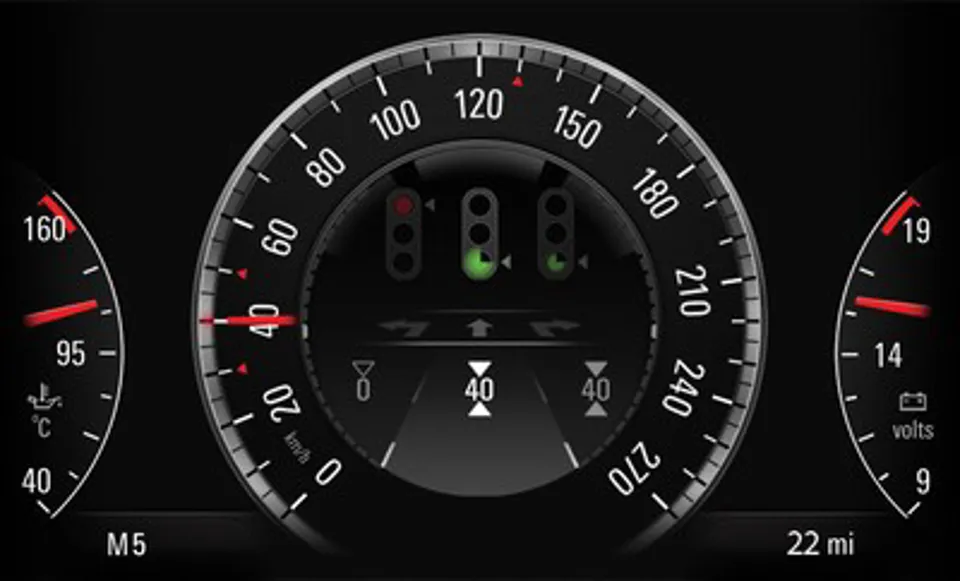Opel is developing technology aimed at increasing efficiency and safety in urban transport, while will appear in future Vauxhall cars and vans.
The goal of the partly German government funded project - UR:BAN (user oriented assistance systems and network management) - is to provide drivers of cars and commercial vehicles with forward-looking support, tailored and customised to driving in urban traffic.
More than 30 partners from the automotive industry, electronics and software companies, together with research institutes and local authorities, are developing intelligent assistance and cooperative traffic management systems.
The project, is divided into three pillars: cognitive assistance, networked traffic system, and human factors in traffic.
"Opel/Vauxhall is a partner in all three project pillars", said Michael F Ableson, member of the management board and GM Europe vice-president of engineering.
"The focus is always on the human being. Teams of engineers, physicists and traffic psychologists are exploring assistance in difficult situations, the intelligent networking of vehicles and infrastructure, driver behaviour, and the appropriate human-machine interaction for urban driving."
Cognitive assistance - collision avoidance by evading and braking
In urban traffic, difficult situations can occur where the driver may not react in time. This is where the sub-project collision avoidance by steering and braking comes in. The Opel/Vauxhall team is developing an advanced driver assistance system that takes advantage of the extra road space created by steering intervention to implement an additional situation-specific evasion. This system should help avoid collisions with vehicles and pedestrians in inner-city traffic.
At the mid-term presentation, Opel/Vauxhall will show a demonstration vehicle equipped with advanced camera and radar, complemented by modified braking and steering systems, which allow an intervention in the control over the vehicle.
Consideration of the driver's reaction represents an important criterion for the optimisation of the intervention strategy. In addition, Opel/Vauxhall will integrate the latest findings of human-machine interaction and driver intention detection in the demonstration vehicle.
Networked traffic system - smart intersection
Information sent to the vehicle via Wi-Fi from the traffic management infrastructure and other vehicles can help to generate recommendations for driving at intersections, which an intuitive human-machine-interaction can communicate to the driver.
This could enable the driver to approach the intersection comfortably, safely and energy efficiently and preferably cross without stopping. This optimisation and the further development of car-to-X technology specifically for driving in an urban environment is presented within the framework of UR:BAN.
In this part of the project, Opel/Vauxhall is building on many years of experience in the field of car-to-X communication, as shown in projects such as the successfully completed SIM-TD field test. A networked traffic system and cooperative driving will enable the future step from the mere exchange of information to the joint action of all relevant actors.
Human factors in traffic - the appropriate HMI for urban driving
Within UR:BAN, an Opel/Vauxhall team is working on improving technical systems. However, the information gained by the new technical systems can only improve driving and safety when drivers also know how to deal with the newly won information and how to react correctly. The focus of the sub-project human-machine interaction (HMI) therefore is the way humans experience the behaviour of driver assistance systems.
There is also interdisciplinary teamwork, with psychologists, engineers and physicists collaborating on the development and implementation of new technology elements to communicate with the driver.
Questions addressed here include what information content do drivers need in order to follow a driving strategy; or what forms of representation motivate drivers to use a system; and how to avoid driver distraction. The experts test the influence of the assistance systems in various simulators and in real traffic, under controlled conditions.
The evaluation of the objective and subjective data provides the basis for the evaluation of system design and layout. Assistance systems that optimally support the user in his driving behaviour are then integrated, in close cooperation with the other sub-projects.
Human factors in traffic - behaviour prediction and intention recognition
Understanding driver behaviour can help to optimise the warning strategy of the man-machine interface of assistance systems. Opel/Vauxhall's target in the sub-project behaviour prediction and intention recognition is therefore to develop an algorithm to detect driver intention using standard vehicle sensors. This allows a prediction of driver behaviour in difficult driving situations.
The algorithm should identify, at an early stage, future avoidance manoeuvres or emergency braking situations. Extensive testing and test data records show that, before manoeuvres begin, specific behaviour patterns and characteristics in the transverse and longitudinal guidance of the vehicle show up with all drivers.
More than 50 volunteers completed a specific drive route under controlled conditions, where they encountered unexpected situations and the resultant manoeuvres.
Based on the tests, the Opel/Vauxhall team expects to predict whether the driver can mitigate an emergency situation through steering or braking.
This information can help to adapt appropriate warning and intervention strategies beneficial for the sub-project collision avoidance by evading and braking. If the system detects that the driver alone can mitigate a difficult situation, it can delay or suppress a driver warning.

















Login to comment
Comments
No comments have been made yet.